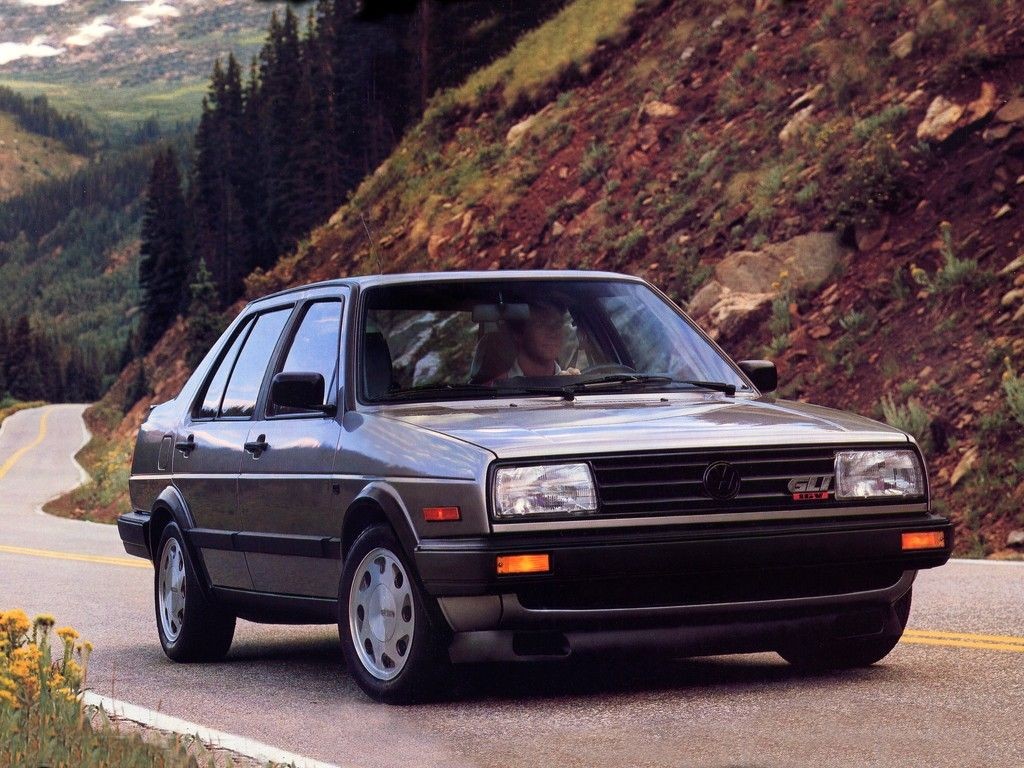For some cars, it’s hard to explain the enduring appeal. The 1991 Volkswagen Jetta, a member of the Mk2 generation, might be one of those vehicles. While not universally admired, this Jetta holds a special place for those who appreciate its blend of German engineering, practical design, and a certain analog driving experience. Let’s delve into why this classic Volkswagen Jetta from 1991 continues to pique the interest of car enthusiasts.
My own history with the Mk2 Jetta and its hatchback sibling, the Golf, goes back to high school. A friend’s basic white 1985 Golf, playfully decorated with black vinyl cow spots, was a memorable introduction to the model. Later, in college, another friend owned a 1989 Jetta GLI 16-valve, a car I admired despite her inexplicable dislike for Golfs. Driving various Mk2s over the years, I was consistently impressed by their fun-to-drive nature and wonderfully direct, “analog” feel. You sat upright, enjoying excellent visibility, and these were peppy, sometimes even quick, little cars. They boasted decent handling and those slightly vague yet engaging manual transmissions that are a hallmark of German engineering from that era. Built to run at speed, these cars, regardless of their assembly location, had a distinct character.
Then, in 1997, shortly after meeting my wife, I encountered her 1990 Jetta Carat. Perhaps “Carat” implied luxury, but under the skin, it was still a Mk2 Jetta. It was a Red-Metallic four-door with gray cloth interior – a common color combination of the time. Being a Carat, it came with features considered premium then: air conditioning, power windows, a sunroof, and Zandvoort alloy wheels, among other things. However, its 105 horsepower engine was paired with a truly underwhelming 3-speed automatic transmission, a unit that seemed to share its disappointing DNA with the equally problematic automatic in my family’s old Audi 5000S. The transmission eventually failed, confirming its less-than-stellar reputation.
My wife’s Jetta had a peculiar “sweet smell” inside, which turned out to be a perpetually leaking heater core. This issue dramatically resolved itself when the heater core finally gave way, leaving them stranded near the Richmond-San Rafael bridge in northern California. After a roadside repair involving bypassing the heater core with parts from a hardware store, we discovered an open recall for Mk2 heater cores. While the car was at the Volkswagen dealership for the recall work, we also had the front struts replaced. The change in handling afterward was so significant it almost caused an accident as I adjusted to the vastly improved responsiveness.
Despite this shared history, I never owned a Mk2 Jetta myself. However, that doesn’t stop me from occasionally browsing listings, which brings us to a recent find: a 1991 Jetta GL. This particular model, advertised for sale, is a basic GL trim with only air conditioning as an option, and unfortunately, that same dreaded automatic transmission.
Aesthetically, it’s quite appealing. While some prefer the earlier, slimmer bumpers, the later style on this 1991 model is still clean and attractive. The paint and wheels appear to be in good condition, at least on the visible side. The absence of a sunroof is a bonus, eliminating a potential source of leaks. The trunk does show some rust, described as “interesting,” and it seems a previous owner attempted rust remediation with POR-15. Perhaps fiberglassing would be a more comprehensive solution for the trunk floor.
The interior is surprisingly inviting. The seats and carpets look clean and free of major wear or odors. However, it’s not without flaws. Cracks are visible on the dashboard, the door panel fabric is separating, and the driver’s door cubby box is missing. It also features those door-mounted shoulder belts, a less-than-ideal safety feature that relies on manual lap belt buckling for proper function. It’s likely that proper mounting points for modern 3-point seatbelts exist beneath the trim, a potential upgrade for safety-conscious owners.
Imagining oneself behind the wheel, you can almost feel the seat, the turn of the ignition key, and the steering wheel in your hands. You can envision the gauge needles sweeping as you go through the gears, even if it’s the automatic. The heater controls would likely feel flimsy, the mirror adjustment knob disconnected yet functional, and the shifter might make that characteristic “squishy” sound as it moves. These are the tactile sensations that define the Mk2 Jetta experience.
There’s a certain nostalgia for these sensations, minus the potential coolant leaks. There’s a part of me that genuinely misses the Mk2 Jetta.
Update: Further Exploration
Intrigued by this 1991 Jetta GL, further investigation revealed it was also listed on VWVortex forums a couple of months prior, at a slightly lower price. The forum post included additional photos showing the passenger side of the car. The seller mentioned plans to provide photos of the undercarriage, but those are still pending. Despite the unknowns, the car’s overall appearance remains remarkably good.
In conclusion, the 1991 Volkswagen Jetta GL, despite its age and automatic transmission, presents an interesting proposition for those seeking a classic, affordable German car. Its simple design, engaging driving dynamics (in manual versions, at least), and nostalgic appeal continue to resonate with enthusiasts. While potential buyers should be aware of common Mk2 issues like rust and heater core problems, a well-maintained example like this 1991 Jetta could be a rewarding and enjoyable classic car experience.
